Spinning heads, cascades of pea soup and your mother's Army boots are nowhere to be found in Exorcist: The Beginning, but lovers of the ridiculous may be delighted to know that the specter of little Linda Blair a-twitch and a-tremble is not entirely forgotten. A prequel to The Exorcist, William Friedkin's 1973 shocker in which Blair played a child hijacked by Beelzebub, this new film comes gussied up with some fine talent and its very own bag of cheap tricks. But when push comes to demonic shove, hell apparently hath no fury like a woman in green pancake makeup just as surely as some producers have no shame.
Exorcist: The Beginning is the third feature film to be squeezed from the pulpy remains of Friedkin's original. (That film spawned two less-acclaimed sequels, and four years ago it was re-released in theaters with some padding and tweaks.)
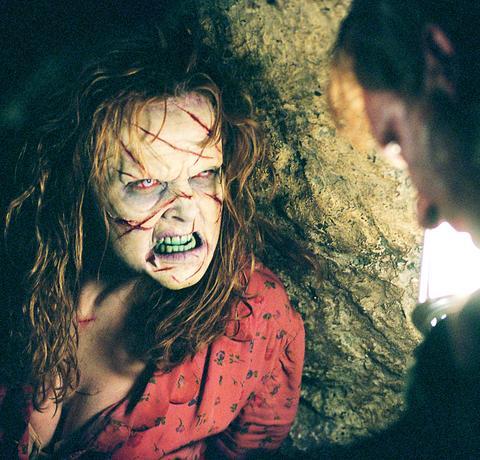
Based on the William Peter Blatty best seller, the first Exorcist mostly entails the efforts of two priests trying to beat the devil out of Blair's 12-year-old with the aid of pop metaphysics and some exceedingly dated special effects. A monster hit and very effective for a certain teenager who must remain nameless, Friedkin's film has not held up well, but compared with this latest effort does vaguely resemble the classic of 1970s cinema its fans tout it as.
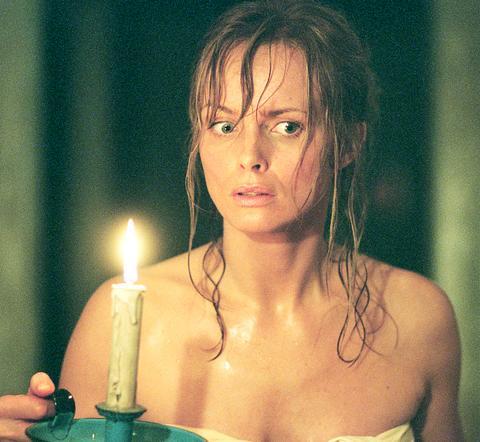
Exorcist: The Beginning was directed by Renny Harlin, whose previous efforts include a solid Nightmare on Elm Street sequel, a bad Die Hard sequel and the diverting thriller The Long Kiss Goodnight. Slick and devoid of any obvious personal signature, Harlin's directorial style is serviceable enough for a movie like Exorcist: The Beginning, which exists solely to rake in cash during its opening weekend and settle into a long shelf-life in the DVD hereafter.
As it happens, the DVD release will be more interesting than the theatrical one if, as floated in Variety, it includes the version of this prequel shot by the director Paul Schrader. Schrader was fired from the project on grounds that his prequel was not scary. Schrader, in turn, had replaced the film's initial director, John Frankenheimer, who died during preproduction.
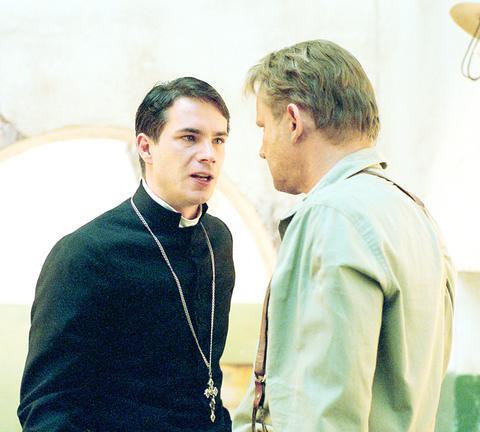
All this background noise, alas, turns out to be more interesting than what has managed to finally make it on to the screen. Written by Alexi Hawley, who was brought in to revamp William Wisher and Caleb Carr's earlier screenplay, Exorcist: The Beginning opens centuries ago with a priest stumbling through a landscape littered with bloodied corpses and the writhing bodies of the soon to be dead. From there it's a fast cut to Cairo circa 1949, where amid the putatively exotic third-world sights and sounds the Swedish actor Stellan Skarsgard sits in a bar wearing the rumpled white suit and anomie of a B-movie hero. This world-weary traveler is, of course, Merrin, the same character played by the Swedish actor Max von Sydow in The Exorcist, but now without the sanctity of the priestly collar.
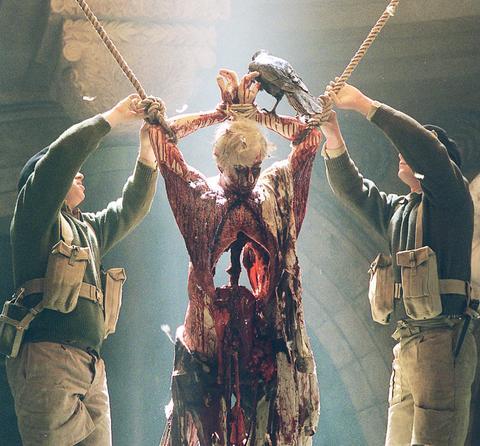
What ensues essentially conforms to the movie horror manual, though the production does benefit from the talents of the Italian cinematographer Vittorio Storaro, who has given the film a nice nicotine-stain patina. Wrapped in this burnished orange glow, Merrin, having taken a mysterious assignment, creases his brow and tries to discover what a Catholic church is doing buried in the sand in northern Kenya, which is where most of the film's 117 draggy minutes play out. Along for the ride are the usual movie suspects, including a beautiful doctor with peek-a-boo decolletage and a fondness for late-night showering (Izabella Scorupco), a young priest straight from the Vatican (James D'Arcy), a helpful local with a bull's-eye fixed to his forehead (Andrew French) and various other sacrificial lambs, including children, all of whom are lovingly skewered with graphic detail.
Despite the body count and Harlin's reliance on shock cuts and loud noises, Exorcist: The Beginning singularly fails to deliver any palpable shivers. Perhaps more expectedly, given the torturous production history and the unceremonious introduction of the movie (the studio didn't screen the film for critics until the night before it opened), it does afford the occasional and presumably unintended laugh.

Still, despite the risible dialogue, the bulging eyeballs, the heaving bosoms, the digitally rendered hyenas and squirming maggots, the movie fails to achieve the status of the instant camp classic. That's partly because the vibe of the film is too torpid. It simply doesn't have the buoyancy of camp, but mostly because it's deeply unpleasant to watch children, even fictional children, murdered on the altar of greed. Thrills rarely get cheaper or more loathsome.
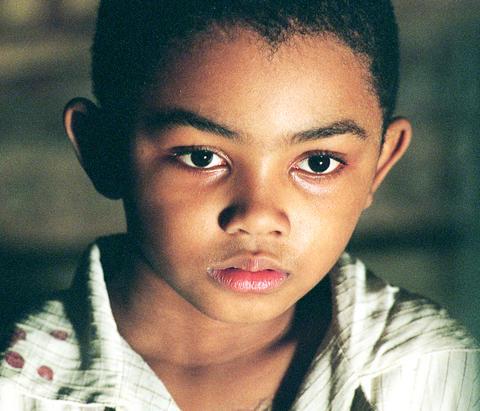

Last week Joseph Nye, the well-known China scholar, wrote on the Australian Strategic Policy Institute’s website about how war over Taiwan might be averted. He noted that years ago he was on a team that met with then-president Chen Shui-bian (陳水扁), “whose previous ‘unofficial’ visit to the US had caused a crisis in which China fired missiles into the sea and the US deployed carriers off the coast of Taiwan.” Yes, that’s right, mighty Chen caused that crisis all by himself. Neither the US nor the People’s Republic of China (PRC) exercised any agency. Nye then nostalgically invoked the comical specter

Relations between Taiwan and the Czech Republic have flourished in recent years. However, not everyone is pleased about the growing friendship between the two countries. Last month, an incident involving a Chinese diplomat tailing the car of vice president-elect Hsiao Bi-khim (蕭美琴) in Prague, drew public attention to the People’s Republic of China’s (PRC) operations to undermine Taiwan overseas. The trip was not Hsiao’s first visit to the Central European country. It was meant to be low-key, a chance to meet with local academics and politicians, until her police escort noticed a car was tailing her through the Czech capital. The

April 15 to April 21 Yang Kui (楊逵) was horrified as he drove past trucks, oxcarts and trolleys loaded with coffins on his way to Tuntzechiao (屯子腳), which he heard had been completely destroyed. The friend he came to check on was safe, but most residents were suffering in the town hit the hardest by the 7.1-magnitude Hsinchu-Taichung Earthquake on April 21, 1935. It remains the deadliest in Taiwan’s recorded history, claiming around 3,300 lives and injuring nearly 12,000. The disaster completely flattened roughly 18,000 houses and damaged countless more. The social activist and

Over the course of former President Ma Ying-jeou’s (馬英九) 11-day trip to China that included a meeting with Chinese Communist Party (CCP) leader Xi Jinping (習近平) a surprising number of people commented that the former president was now “irrelevant.” Upon reflection, it became apparent that these comments were coming from pro-Taiwan, pan-green supporters and they were expressing what they hoped was the case, rather than the reality. Ma’s ideology is so pro-China (read: deep blue) and controversial that many in his own Chinese Nationalist Party (KMT) hope he retires quickly, or at least refrains from speaking on some subjects. Regardless